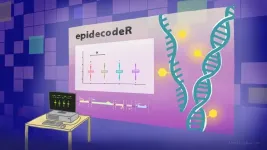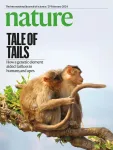(Press-News.org) AUSTIN, Texas — Better prevention of Type II diabetes could save both lives and money. The U.S. spends over $730 billion a year — nearly a third of all health care spending — on treating preventable diseases like diabetes.
For the 98 million adults who are prediabetic and at risk of developing Type II diabetes, preventive treatments such as the drug metformin can help stave off the disease. But the medicines are expensive. With limited budgets, insurers and health care facilities need to allocate them to the patients they can help the most.
Currently, a health provider calculates a patient’s risk of developing diabetes, using a simple charting tool. Patients whose risk scores exceed a predetermined threshold get enrolled in preventive care.
Now, a new study from Texas McCombs has developed a novel tool for identifying those patients, based on artificial intelligence.
Maytal Saar-Tsechansky, a professor of information, risk, and operations management, developed an AI- and machine learning-driven model to predict which patients are most likely to benefit from preventive treatment.
“Escalating health care costs necessitate more efficient and cost-effective approaches to disease prevention, particularly preventable diseases such as Type II diabetes,” Saar-Tsechansky says.
One hurdle for allocation models is that they’re often based on crude estimates of how a patient will benefit, she says. With Mathias Kraus of Friedrich-Alexander-Universität and Stefan Feuerriegel of the Munich School of Management, she leveraged a rich source of data to produce better assessments: electronic health records on 89,191 prediabetic patients from 2003 to 2012.
The records came from a health insurer that wanted to improve care for patients at risk of developing Type II diabetes.
When the researchers applied their decision model to the insurer’s data — including body measurements, lab tests, disease codes, drug prescriptions, and sociodemographic information — it improved both health and economic efficiency.
It prevented 25% more cases of Type II diabetes from developing than the use of traditional diabetes risk scores did.
It saved $2.9 million more per 10,000 patients than savings garnered through the traditional clinical baseline method.
If applied to the entire U.S. population, the model could save $1.1 billion annually in health care costs.
“By enabling data-driven and cost-effective allocation of resources, this approach is instrumental in making preventive care more impactful,” Saar-Tsechansky says.
The data-drive decision model could help prevent other conditions, she adds, such as respiratory diseases and cardiovascular disease, the leading cause of death in the U.S. It could improve patient outcomes for both, reducing long-term costs for the U.S. health care system.
Using quality data, such as accurate electronic medical health records, could lead to another benefit: more customized approaches to health care.
“For patients, especially those at risk for diseases such as Type 2 diabetes, our model means a more personalized and effective approach to preventive care,” Saar-Tsechansky says.
“It suggests future preventive care could be more tailored to individual risk factors, increasing the effectiveness of interventions and potentially reducing the likelihood of disease onset.”
“Data-Driven Allocation of Preventive Care with Application to Diabetes Mellitus Type II” is published in Manufacturing & Services Operation Management.
END
For Type II diabetes prevention, tap into AI
A model uses artificial intelligence to create better outcomes and save costs for prediabetic patients
2024-02-28
ELSE PRESS RELEASES FROM THIS DATE:
New tool helps decipher gene behaviour
2024-02-28
Scientists have extensively researched the structure and sequence of genetic material and its interactions with proteins in the hope of understanding how our genetics and environment interact in diseases. This research has partly focused on ‘epigenetic marks’, which are chemical modifications to DNA, RNA, and the associated proteins (known as histones).
Epigenetic marks influence when and how genes get switched on or off. They can also instruct cells about how to interpret and use genetic information, influencing various cellular processes. Changes in epigenetic marks therefore significantly impact gene regulation and cellular ...
Think smoking cannabis won’t damage your heart? Think again
2024-02-28
The cardiac risks of smoking marijuana are comparable to those of smoking tobacco, according to researchers at UC San Francisco, who warn that the increasing use of cannabis across the country could lead to growing heart health problems.
The study found that people who used cannabis daily had a 25% increased risk of heart attack and a 42% increased risk of stroke compared to non-users.
Cannabis has become more popular with legalization. Recreational use is now permitted in 24 states, and as of 2019, nearly 4% said they used it daily and 18% used it annually. That is a significant increase since 2002, when 1.3% said they used it daily and 10.4% ...
Early-life exposure to air pollution and childhood asthma cumulative incidence
2024-02-28
About The Study: In this study of 5,279 children, early life air pollution was associated with increased asthma incidence by early and middle childhood, with higher risk among minoritized families living in urban communities characterized by fewer opportunities and resources and multiple environmental co-exposures. Reducing asthma risk in the U.S. requires air pollution regulation and reduction combined with greater environmental, educational, and health equity at the community level.
Authors: Antonella Zanobetti, Ph.D., ...
Hourly heat exposure and acute ischemic stroke
2024-02-28
About The Study: The results of this study of 82,000 patients with acute ischemic stroke suggest that hourly heat exposure is associated with increased risk of acute ischemic stroke onset. This finding may benefit the formulation of public health strategies to reduce cerebrovascular risk associated with high ambient temperature under global warming.
Authors: Jing Zhao, Ph.D., and Haidong Kan, Ph.D., of Fudan University in Shanghai, China, are the corresponding authors.
To access the embargoed study: Visit our For The Media website at this link https://media.jamanetwork.com/
(doi:10.1001/jamanetworkopen.2024.0627)
Editor’s ...
CityUHK develops world-leading microwave photonics chip for high-speed signal processing
2024-02-28
A research team led by Professor Wang Cheng from the Department of Electrical Engineering (EE) at City University of Hong Kong (CityUHK) has developed a world-leading microwave photonic chip that is capable of performing ultrafast analog electronic signal processing and computation using optics.
The chip, which is 1,000 times faster and consumes less energy than a traditional electronic processor, has a wide range of applications, covering 5/6G wireless communication systems, high-resolution radar systems, artificial intelligence, computer vision, and image/video processing.
The team's research findings were published in the prestigious scientific ...
The “switch” that keeps the immune system from attacking the body
2024-02-28
A microscopic battle rages in our bodies, as our cells constantly fend off invaders through our immune system, a complex system of cells and proteins designed to protect us from harmful pathogens. One of its central components is the enzyme cyclic GMP-AMP synthase (cGAS), which acts as a sentinel, detecting foreign DNA and initiating an immune response.
However, the immune system requires precise regulation to prevent cGAS from mistakenly attacking the body's own tissues, leading to autoimmune disorders, which now affect about 10% of the global population.
Previous studies have revealed a little of how this ...
Study unravels the earliest cellular genesis of lung adenocarcinoma
2024-02-28
HOUSTON ― Researchers at The University of Texas MD Anderson Cancer Center built a new atlas of lung cells, uncovering new cellular pathways and precursors in the development of lung adenocarcinoma, the most common type of lung cancer. These findings, published today in Nature, open the door for development of new strategies to detect or intercept the disease in its earliest stages.
Led by Humam Kadara, Ph.D., professor of Translational Molecular Pathology and Linghua Wang, M.D., Ph.D., associate professor of Genomic Medicine, the team generated an atlas of around 250,000 normal and cancerous ...
Change in gene code may explain how human ancestors lost tails
2024-02-28
A genetic change in our ancient ancestors may partly explain why humans don’t have tails like monkeys, finds a new study led by researchers at NYU Grossman School of Medicine.
Published online February 28 as the cover story of the journal Nature, the work compared the DNA of tail-less apes and humans to that of tailed monkeys, and found an insertion of DNA shared by apes and humans, but missing in monkeys. When the research team engineered a series of mice to examine whether the insertion, in a gene called TBXT, affected their tails, they found a variety of tail effects, including some mice born without tails. ...
Risk of hospital readmission after surgery is high for older Americans
2024-02-28
New Haven, Conn. — A new Yale study finds an increased risk of hospital readmission for older Americans within 180 days of undergoing major surgery — a risk that is particularly acute for individuals who are frail or have dementia.
The findings were published Feb. 28 in the journal JAMA Network Open.
Previous research by the same Yale team demonstrated that major surgery is a common event for older Americans and also demonstrated a heightened mortality risk within one year of major surgery for people who are age 65 and older. The new study is the first to describe both the short-term risk (within 30 days) and longer-term ...
How molecular “handedness” emerged in early biology
2024-02-28
LA JOLLA, CA—Molecules often have a structural asymmetry called chirality, which means they can appear in alternative, mirror-image versions, akin to the left and right versions of human hands. One of the great mysteries about the origins of life on Earth is that virtually all of the fundamental molecules of biology, such as the building blocks of proteins and DNA, appear in just one chiral form.
Scripps Research chemists, in two high-profile studies, have now proposed an elegant solution to this mystery, showing how this single-handedness or “homochirality” could have become established in biology.
The studies were published in the Proceedings ...
LAST 30 PRESS RELEASES:
Tracing the quick synthesis of an industrially important catalyst
New software sheds light on cancer’s hidden genetic networks
UT Health San Antonio awarded $3 million in CPRIT grants to bolster cancer research and prevention efforts in South Texas
Third symposium spotlights global challenge of new contaminants in China’s fight against pollution
From straw to soil harmony: International team reveals how biochar supercharges carbon-smart farming
Myeloma: How AI is redrawing the map of cancer care
Manhattan E. Charurat, Ph.D., MHS invested as the Homer and Martha Gudelsky Distinguished Professor in Medicine at the University of Maryland School of Medicine
Insilico Medicine’s Pharma.AI Q4 Winter Launch Recap: Revolutionizing drug discovery with cutting-edge AI innovations, accelerating the path to pharmaceutical superintelligence
Nanoplastics have diet-dependent impacts on digestive system health
Brain neuron death occurs throughout life and increases with age, a natural human protein drug may halt neuron death in Alzheimer’s disease
SPIE and CLP announce the recipients of the 2025 Advanced Photonics Young Innovator Award
Lessons from the Caldor Fire’s Christmas Valley ‘Miracle’
Ant societies rose by trading individual protection for collective power
Research reveals how ancient viral DNA shapes early embryonic development
A molecular gatekeeper that controls protein synthesis
New ‘cloaking device’ concept to shield sensitive tech from magnetic fields
Researchers show impact of mountain building and climate change on alpine biodiversity
Study models the transition from Neanderthals to modern humans in Europe
University of Phoenix College of Doctoral Studies releases white paper on AI-driven skilling to reduce burnout and restore worker autonomy
AIs fail at the game of visual “telephone”
The levers for a sustainable food system
Potential changes in US homelessness by ending federal support for housing first programs
Vulnerability of large language models to prompt injection when providing medical advice
Researchers develop new system for high-energy-density, long-life, multi-electron transfer bromine-based flow batteries
Ending federal support for housing first programs could increase U.S. homelessness by 5% in one year, new JAMA study finds
New research uncovers molecular ‘safety switch’ shielding cancers from immune attack
Bacteria resisting viral infection can still sink carbon to ocean floor
Younger biological age may increase depression risk in older women during COVID-19
Bharat Innovates 2026 National Basecamp Showcases India’s Most Promising Deep-Tech Ventures
Here’s what determines whether your income level rises or falls
[Press-News.org] For Type II diabetes prevention, tap into AIA model uses artificial intelligence to create better outcomes and save costs for prediabetic patients



